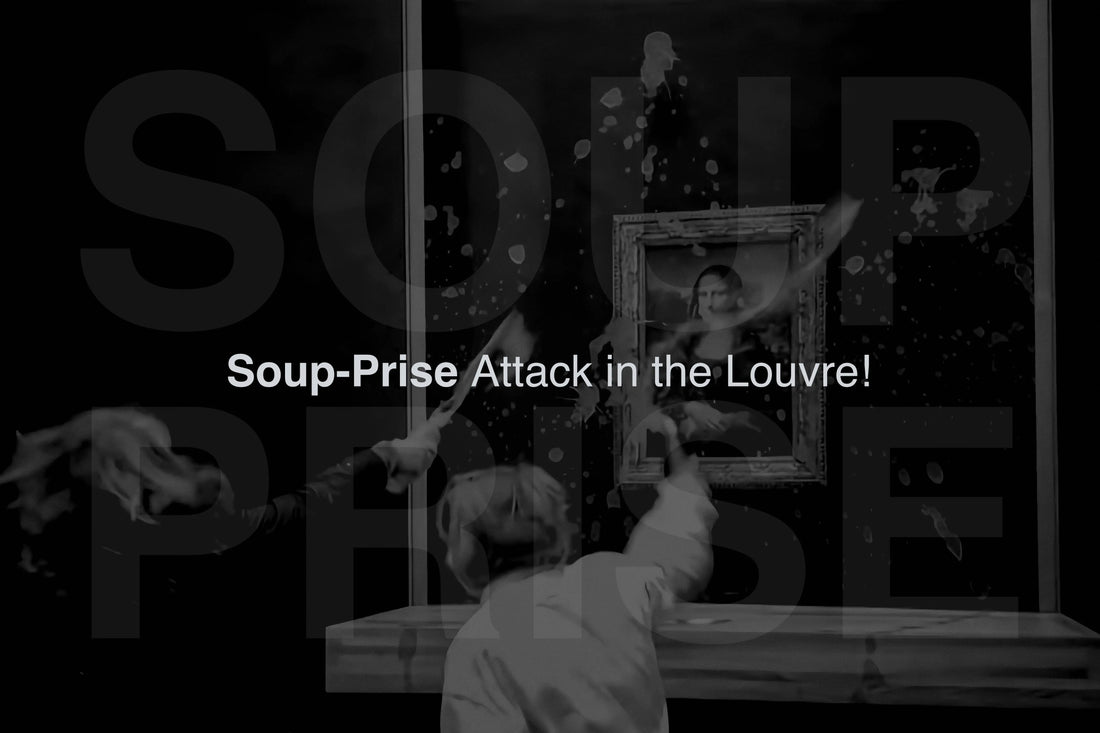
Artistic Reverence vs. Human Recklessness - The Mona Lisa's Turbulent Journey
Share
The Iconic Mona Lisa: A Journey Marred by Controversy
This isn't the first time this enigmatic lady has been subjected to human folly. From Vincenzo Peruggia's audacious theft in 1911 to the smearing of cake-like cream by a disguised man in 1959 and so on, the Mona Lisa's journey has been marred by a series of bizarre attacks and irresponsible political movements.
Yet, paradoxically, each assault has only escalated her fame, embedding her deeper into the collective human consciousness. However, it's crucial to dissect the motive behind such acts. While the recent incident aimed to spotlight the plight of farmers and the pressing concerns of global food security, one can't help but question the efficacy and rationale of targeting a symbol of collective human heritage.
Reflections on Classical Mastery: The Timeless Dialogue of Art
This brings us to a broader contemplation of the art world itself. In today's digital age, where the depth of art can often be as shallow as an Instagram story, the rich tapestry of late 19th-century history paintings emerges as a sanctuary of depth and substance. Sure, today's art scene has its gems, but scrolling through an endless feed of superficial snapshots can make one yearn for the days when artists like Gérôme, Alma-Tadema, and Jean-Paul Laurens poured their souls into their canvases.
These works, born from the disciplined hands of artists trained in the French Academic style, starkly contrast the transient and often superficial nature of today's visual content. Imagine if Jean-Léon Gérôme, instead of painstakingly crafting "Pollice Verso," had succumbed to the ease of digital filters to portray a gladiator in combat.

Or if Lawrence Alma-Tadema had replaced his intricate floral arrangements in "The Roses of Heliogabalus" with a mere stroke of an emoji brush. While today's art scene is not devoid of talent, the constant barrage of fleeting imagery often overshadows the profound narratives and meticulous craftsmanship of yesteryears.

The late 19th-century masters—Gérôme, Alma-Tadema, Laurens—didn't merely paint; they breathed life into their canvases, inviting viewers to partake in a timeless dialogue that transcended the visual realm. Their creations weren't meant for fleeting glances but for deep, reflective engagement.
They remind us that art, in its truest form, is not just a momentary delight for the senses but a profound communion with the human spirit, offering a glimpse into the soul of an era and reflecting the intricate tapestry of human experience. But sometimes I truly ask myself: does anyone really care or gives a FC#$ about it?

Navigating the Crossroads: The Choice Between Ephemeral and Enduring Art
So, as we stand at the crossroads of artistic expression, caught between the immediacy of digital creation, political movements, protesters and the enduring legacy of classical art, it's worth pondering the path we choose to tread.

Perhaps it's time to lower our screens, step away from the ephemeral, and immerse ourselves in the profound depths that only true art can offer. For in the end, art is more than a visual feast; it's a beacon of creativity, a testament to human resilience, and a mirror reflecting the myriad facets of our existence. But then again if we | you do this you won’t be able to see most of the art or read this post.
So in my humble opinion we are pretty much f**cked.
